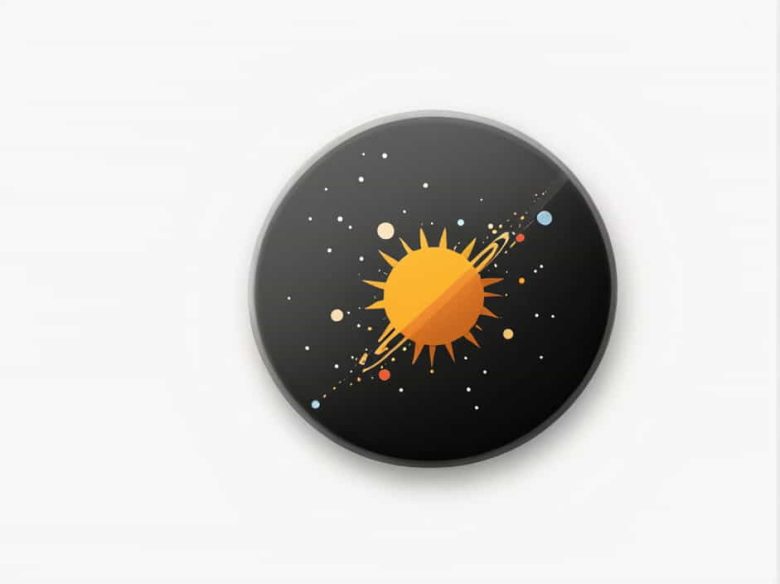The Hertzsprung-Russell (H-R) diagram is a fundamental tool in astronomy used to classify stars based on their luminosity, temperature, and spectral type. It helps astronomers understand stellar evolution and the life cycle of stars.
One of the most familiar stars to us is the Sun, which serves as a benchmark for studying other stars in the universe. But where exactly does the Sun fit on the H-R diagram? This topic explores the Sun’s position, its classification, and its eventual evolution over billions of years.
Understanding the Hertzsprung-Russell Diagram
What Is the Hertzsprung-Russell Diagram?
The Hertzsprung-Russell diagram is a scatter plot that represents stars based on two primary characteristics:
- Luminosity (Brightness): Measured in terms of the Sun’s brightness, known as solar luminosity (L☉).
- Surface Temperature: Measured in Kelvin (K) and plotted from high to low, with hotter stars on the left and cooler stars on the right.
Stars on the H-R diagram are grouped into different categories based on these properties.
The Main Regions of the H-R Diagram
The diagram is divided into distinct regions:
- Main Sequence: The largest group, where stars generate energy through hydrogen fusion.
- Giant and Supergiant Stars: Massive, evolved stars that have expanded and increased in brightness.
- White Dwarfs: Small, hot remnants of stars that have exhausted their nuclear fuel.
Now, let’s explore where the Sun fits into this classification.
The Sun’s Position on the Hertzsprung-Russell Diagram
The Sun Is a Main Sequence Star
The Sun is located on the Main Sequence of the H-R diagram. This means it is in the stable phase of its life cycle, fusing hydrogen into helium in its core.
Key characteristics of the Sun on the H-R diagram:
- Spectral Type: G2V (G-type main-sequence star)
- Surface Temperature: Approximately 5,778 K
- Luminosity: 1 L☉ (by definition, since the Sun is used as a reference)
- Absolute Magnitude: About +4.83
- Lifespan: About 10 billion years (currently around 4.6 billion years old)
On the diagram, the Sun is positioned near the middle, slightly to the right of the hotter, more massive stars, and to the left of cooler, dimmer stars like red dwarfs.
Comparison With Other Main Sequence Stars
The Sun is neither the hottest nor the brightest star. Here’s how it compares to other main-sequence stars:
- Hotter and Brighter Stars: Blue and white stars, such as Sirius or Vega, are much hotter and luminous.
- Cooler and Dimmer Stars: Red dwarfs, such as Proxima Centauri, are smaller, cooler, and fainter.
This makes the Sun a relatively average star, often referred to as a yellow dwarf.
The Sun’s Evolution on the H-R Diagram
The Sun will not remain in the same position forever. Over billions of years, it will move through different phases on the H-R diagram.
1. Main Sequence (Current Phase)
- The Sun is stable, converting hydrogen into helium in its core.
- It will stay in this phase for another 5 billion years.
2. Red Giant Phase
- When the Sun exhausts its hydrogen, it will expand into a red giant, increasing in size and luminosity while cooling down.
- It will move to the upper right of the H-R diagram, becoming thousands of times brighter but much cooler.
3. Planetary Nebula and White Dwarf Phase
- The Sun will shed its outer layers, forming a planetary nebula.
- Its core will remain as a white dwarf, which will be hot but dim, shifting to the lower left of the H-R diagram.
Over time, the white dwarf will cool and fade, eventually becoming a black dwarf, a cold remnant that no longer emits light.
Why Is the Sun’s Position Important?
The Sun’s location on the H-R diagram provides insight into:
- The Life Cycle of Stars: The Sun serves as a model for studying other stars of similar mass and composition.
- Planetary Habitability: The stability of main-sequence stars like the Sun makes life possible on planets such as Earth.
- Future Predictions: Understanding the Sun’s evolution helps astronomers predict how Earth and the solar system will change over billions of years.
The Sun is a G-type main-sequence star located in the middle of the Hertzsprung-Russell diagram. It has been stable for billions of years and will remain so for another 5 billion years before evolving into a red giant and eventually a white dwarf.
Its position on the H-R diagram highlights its role as a stable, average star, making it an ideal reference point for studying stellar evolution. Understanding the Sun’s place in the universe helps us appreciate its importance in sustaining life on Earth and predicting the future of our solar system.



